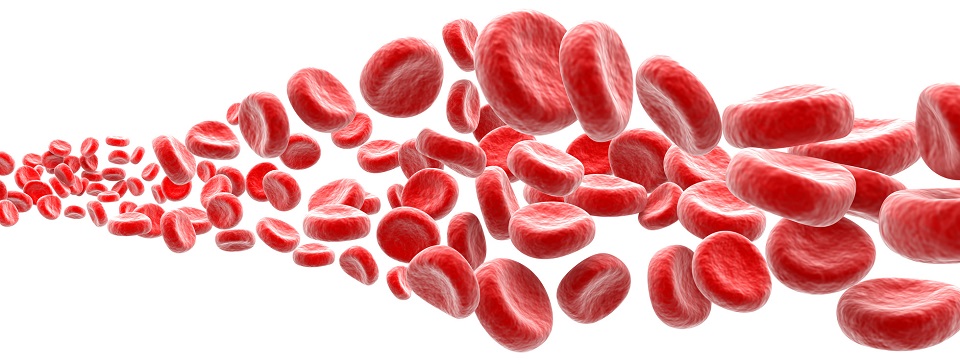
According to the health statistics of industrialised countries, high blood pressure is no longer a disease that’s associated with obesity. Even slim people are susceptible to it. Officially, 25% of the population aged between 20 and 60 years have high blood pressure. This number rises dramatically among people over 70 years old. These days, this insidious and life-threatening disease is also reported among children. It’s assumed that approximately 8 million people have high blood pressure in Poland. If left untreated, it inevitably leads to heart attacks, cerebral haemorrhage, as well as premature failure or weakening of the walls of the arteries and blood vessels. The widely held belief that high blood pressure can be controlled only pharmacologically is untrue. It can also be controlled (extremely effectively) through a proper diet and supplementation of missing nutrients. However, all this must be done while eliminating toxic loads (especially heavy metals), stress and lack of physical activity.
Where should you start, if you’d like to control blood pressure this way?
First of all, you must recognise the fact that everyone is different and, therefore, everyone has different toxic load severity and type. They also have different needs for particular nutrients.

If you want to find out about your own biochemical needs, you must look inside the cells, and find out what’s bothering them, as well as what’s missing. You need to change your way of thinking, and temporarily forget about blood tests. Blood tests are not able to answer questions about which nutrients you really need in your cells, or about the nature of their toxic load. This is why blood tests are subjective.
So, what should we do?
Well, we must start our trip to cell interiors with an analysis of soft tissue, which includes hair. There’s no other choice. Spectrography – more commonly known as elemental hair analysis – is a technology that was developed for this very purpose, and has been used by the most prestigious laboratories around the world. It enables us to precisely determine the ‘unknown’ factors, which may prove to be the causes we were seeking for high blood pressure, and other diseases.
What else should we know about EHA?
Before you decide to look for ‘unknown’ pathogens, you should decide which laboratory you want to use to conduct the test. This is an important decision, because accuracy is extremely important. The same can be said about the interpretation of the result, which determines the health recommendations aimed at bringing the body into balance. In my opinion, the best choice is the laboratory LifeLine Diag in Katowice, with which I’ve had the pleasure of working. The thing that convinced me is the highest-quality equipment, which directly translates into reliable and credible results.
Let’s suppose that you want to go down this path. You’re then faced with another question.
What do you do with pharmacological treatment of blood pressure?
It’s obvious that pharmacology has its place in the treatment of blood pressure (especially when it’s at 160/100 or more). However, this doesn’t mean that the pharmaceuticals used for this purpose guarantee protection against heart attack, cerebral haemorrhage or artery wall rupture.
How should we understand blood pressure measurements?
- Ideal blood pressure is always 120/80.
- Anything above 120/80 but below 140/90 is referred to as mildly elevated blood pressure .
- Blood pressure between 140/90 and 155/95 is referred to as normal-high. ‘People with this kind of blood pressure should not be treated with pharmacological agents.’ In other words, these drugs can cause side effects that are worse than those caused by high blood pressure at this level. And what should those with slightly elevated blood pressure do? According to the cardiologists quoted above, pharmaceutical drugs have no benefit for such people (European Society for Hypertension and the European Society of Cardiology -2013). By definition, they’re supposed to reduce the number of heart attacks and cerebral haemorrhages. However, in addition to the fact that their effectiveness in these cases is questionable at best, according to experts, they continue to cause more-serious side effects.
The blood pressure ranges presented above are usually caused by changes in arteries or stress. However, this doesn’t mean that high blood pressure cannot be caused by other, more-serious factors (see below).
In conclusion: if interference using drugs in the above cases is not recommended, it doesn’t mean that people with blood pressure above 160/100 are helpless. Identifying the causes of the high blood pressure and correcting them may prove to be an effective solution. It turns out that drugs to control blood pressure have to be administered long term in only few cases, and only if other methods haven’t worked. - High blood pressure (powyżej 160/100) is a serious matter that shouldn’t be underestimated. A visit to a doctor is definitely a must. Independent studies confirm that almost all cases of high blood pressure have a biochemical base. Cardiologists who don’t find out the patient’s biochemistry cannot determine the root of the problem. It’s the reason why the term ‘essential hypertension’ exists; this is hypertension with no identifiable cause that has developed over many years.
- 5. There is secondary hypertension, which occurs suddenly, and its reading is usually higher than in essential hypertension, and it has a known cause. This type of high blood pressure applies to approximately 90% of all hypertension sufferers.
The good news for those with hypertension is that the biochemical causes of hypertension can easily be analysed to determine the chemical composition of hair (EHA – Elemental Hair Analysis); the potential causes of the problem and tendencies are clearly visible at cellular level.
Examples of ‘unknown’ causes of hypertension.
- Mental stress through adrenal overload and/or insufficiency.
- Inflammation of the arteries caused by, for example, an allergy ‘to something’, the presence of toxic substances, pharmaceuticals or deficiency of specific vitamins, amino acids and minerals.
- Artery spasms caused by overactive adrenal glands or deficiency of copper, magnesium and calcium.
- Heavy metal burden, e.g. arsenic, lead, mercury, aluminium or cadmium.
- Fragility and lack of elasticity of arteries usually caused by zinc deficiency, excess calcium, copper and heavy metals.
- Excess calcium deposited on the walls of arteries, which can result in their narrowing (restenosis) and hardening. In this case, the heart must work harder (increased pressure) to push blood through the opening of the artery. The prevalence of this disease is increased by a deficiency of zinc, magnesium, potassium, copper, vitamin C and E in the body, as well as the presence of heavy metals (e.g. cadmium, aluminium, mercury).
- Renal failure. Toxic substances, especially heavy metals, are also accumulated in the kidneys, which makes it impossible to regulate water and sodium levels in the body. This frequent cause of hypertension is usually impossible to identify through blood tests, which, despite evident kidney problems (sodium/potassium), often show full functionality. This type of error is likely impossible in tests of hair biochemistry
- Disruptins in thyroid function (production of excessive amounts of thyroxine – the thyroid hormone). In order to correct the problem, it’s necessary to evaluate the bioavailability of zinc, selenium, manganese and copper.
Summary
Similar to other conditions, high blood pressure is the result of a sequence of events that cause ‘stressors’ (undesired toxic substances) and deficiencies of ‘preventers’, or substances that are antagonistic for the ‘stressors’ (minerals, vitamins, amino acids, etc.). What’s happening in this situation? If the former are dominant in relation to the latter, pro-health biochemical processes become impossible. This means that instead of talking about health, we’re talking about disease, including high blood pressure. It’s important not to treat high blood pressure as an event following its own path, but to instead treat it as an event that takes place in the complicated human body. A body, in which the condition of one organ is directly reflected in the condition of other organs. In other words, just like you can’t assess the condition of the thyroid without assessing the condition of the liver and adrenal glands, you can’t cure high blood pressure without taking into account the reasons that caused it and that are beyond the cardiovascular system. Elemental Hair Analysis is a tool that can precisely establish the causes of hypertension. Together with an environmental history, they create a complete set that allows physicians and dieticians to observe ‘unknown’ causes, behind which diseases, including high blood pressure, always hide.
Prepared by: dietician Jerzy Maslanky














